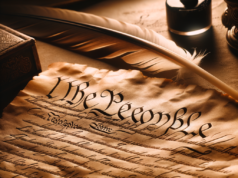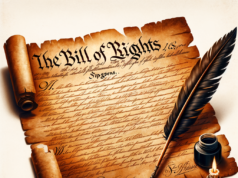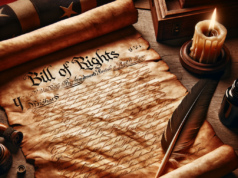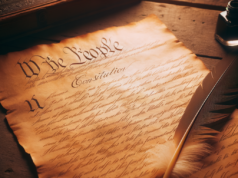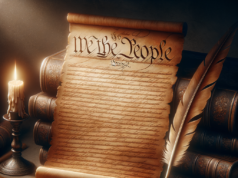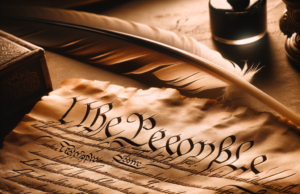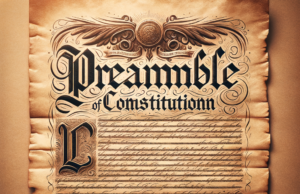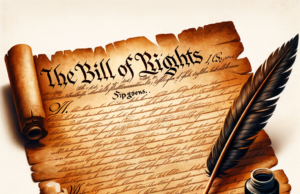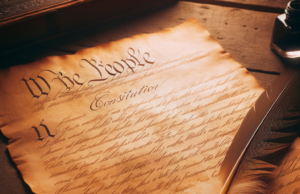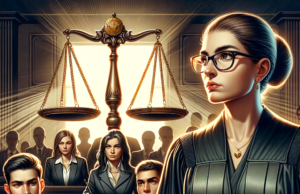Table of Contents
- 1 Understanding Executive Power: A Historical Overview of Its Evolution and Limits
- 2 Constitutional Framework: The Legal Boundaries of Executive Authority in Governance
- 3 Case Studies: Landmark Decisions That Shaped the Scope of Executive Power
- 4 The Role of Checks and Balances: How Other Branches Constrain Executive Actions
- 5 Contemporary Challenges: The Impact of National Crises on Executive Power Limits
- 6 Future Implications: Rethinking the Boundaries of Executive Authority in Modern Governance

In an era marked by political polarization and unprecedented national crises, the boundaries of executive power have come under intense scrutiny. As leaders navigate complex challenges, the question of how much authority the executive branch should wield becomes increasingly pertinent. This article delves into the historical evolution of executive power, the constitutional framework that defines its limits, landmark case studies that have shaped its scope, the role of checks and balances, contemporary challenges, and the future implications for governance.
Understanding Executive Power: A Historical Overview of Its Evolution and Limits
The concept of executive power has evolved significantly since the inception of the United States. Initially, the framers of the Constitution envisioned a limited executive, primarily to enforce laws rather than create them. Over time, however, the role of the presidency has expanded, influenced by historical events such as the Civil War, the New Deal, and the post-9/11 era. Each of these pivotal moments prompted a re-evaluation of executive authority, leading to an increase in the scope of presidential powers. The evolution of executive power reflects a delicate balance between the need for decisive leadership in times of crisis and the imperative to uphold democratic principles and civil liberties.
Constitutional Framework: The Legal Boundaries of Executive Authority in Governance
The U.S. Constitution establishes a framework for executive power through Article II, which outlines the responsibilities and limitations of the presidency. This article grants the president the authority to execute laws, command the military, and conduct foreign affairs, but it also imposes checks through the legislative and judicial branches. The Constitution’s framers intended to prevent any single branch from becoming too powerful, embedding a system of checks and balances that remains vital to American governance. Key provisions, such as the requirement for Senate approval of treaties and appointments, serve as critical legal boundaries that constrain executive authority and ensure accountability.
Case Studies: Landmark Decisions That Shaped the Scope of Executive Power
Throughout American history, several landmark Supreme Court decisions have significantly influenced the interpretation of executive power. One notable case is United States v. Nixon (1974), which established that no person, not even the president, is above the law. This ruling reinforced the principle that executive privilege has limits, particularly when it conflicts with the judicial process. Another critical case, Youngstown Sheet & Tube Co. v. Sawyer (1952), curtailed presidential power by ruling that President Truman overstepped his authority by seizing steel mills during the Korean War without congressional approval. These cases illustrate the judiciary’s role in defining and constraining executive power, ensuring that it does not infringe upon the rights of citizens or the authority of Congress.
The Role of Checks and Balances: How Other Branches Constrain Executive Actions
The system of checks and balances is fundamental to the U.S. government, designed to prevent any one branch from gaining excessive power. Congress holds significant authority over the executive branch through its power to legislate, appropriate funds, and conduct oversight. For instance, Congress can pass laws that limit executive actions or refuse to fund initiatives deemed overreaching. Additionally, the judiciary serves as a critical check on executive power by interpreting laws and adjudicating disputes involving executive actions. This interplay between the branches fosters accountability and ensures that executive authority is exercised within the confines of the law, reinforcing the democratic principles upon which the nation was founded.
Contemporary Challenges: The Impact of National Crises on Executive Power Limits
In recent years, national crises have prompted debates about the limits of executive power. Events such as the COVID-19 pandemic and civil unrest have led to the invocation of emergency powers, raising questions about the extent to which the executive can act unilaterally. The use of executive orders has surged, with presidents leveraging this tool to bypass congressional gridlock. Critics argue that such actions can undermine democratic processes and set dangerous precedents for future administrations. The balance between swift executive action in times of crisis and adherence to constitutional limits remains a contentious issue, highlighting the ongoing tension between effective governance and the preservation of democratic norms.
Future Implications: Rethinking the Boundaries of Executive Authority in Modern Governance
As the political landscape continues to evolve, the boundaries of executive authority may require re-examination. The increasing complexity of global challenges, such as climate change, cybersecurity threats, and public health emergencies, necessitates a reevaluation of how executive power is exercised. There is a growing consensus among scholars and policymakers that a more collaborative approach involving Congress and the judiciary may be essential to address these multifaceted issues effectively. Furthermore, the rise of technology and social media has transformed the way information is disseminated and governance is conducted, prompting a need for new frameworks that can adapt to the realities of modern governance while safeguarding democratic principles.
The limits of executive power are a cornerstone of American democracy, rooted in a historical context that emphasizes accountability and the rule of law. As the nation navigates contemporary challenges, the ongoing dialogue about the scope of executive authority will be crucial in shaping the future of governance. By understanding the historical evolution, constitutional framework, and the role of checks and balances, citizens and leaders alike can engage in informed discussions about the appropriate boundaries of executive power, ensuring that it serves the public interest while upholding the democratic values that define the nation.



